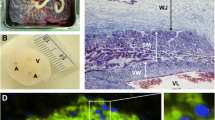Abstract
Stem cell transplantation and cord blood banking have received much popularity among general public and medical professionals in the recent past. But information about the scientific aspects, its utility and limitations is incomplete amongst laypersons as well as many medical practitioners. Stem cells differ from all other types of cells in the human body because of their ability to multiply in order to self perpetuate and differentiate into specialized cells. Stems cells could be totipotent, multipotent, pluripotent, oligopotent or unipotent depending on the type of cells that can arise or differentiate from them. Umbilical cord blood serves as a potent source of hematopoeitic stem cells and is being used to treat various disorders like blood cancers, hemoglobinopathies and immunodeficiency disorders for which hematological stem cell transplantation is the standard of care. Cord blood can be collected at ease, without any major complications and has a lower incidence of graft vs. host reaction compared to bone marrow cells or peripheral blood cells. Both public and private banks have been established for collection and storage of umbilical cord blood. However, false claims and misleading commercial advertisements about the use of umbilical cord blood stem cells for the treatment of a variety of conditions ranging from neuromuscular disorders to cosmetic benefits are widespread and create unrealistic expectations in laypersons and clinicians. Many clinicians and laypersons are unaware of the limitations of cord blood banking, as in treating a genetic disorder by autologous cord blood transplant. Knowledge and awareness about the scientific indications of cord blood stem cell transplantation and realistic expectations about the utility of cord blood among medical practitioners are essential for providing accurate information to laypersons before they decide to preserve umbilical cord blood in private banks and thus prevent malpractice.
Similar content being viewed by others
References
Gluckman E, Broxmeyer HA, Auerbach AD, et al. Hematopoietic reconstitution in a patient with Fanconi’s anemia by means of umbilical-cord blood from an HLA-identical sibling. N Engl J Med. 1989;321:1174–8.
Tuteja M, Agarwal M, Phadke SR. Knowledge of cord blood banking in general population and doctors: a questionnaire based survey. Indian J Pediatr. 2016;83:238–41.
Murke F, da Conceição Castro SV, Giebel B, Görgens A. Concise review: asymmetric cell divisions in stem cell biology florian. Symmetry. 2015;7:2025–37.
Fisher SA, Zhang H, Doree C, Mathur A, Martin-Rendon E. Stem cell treatment for acute myocardial infarction. Cochrane Database Syst Rev 2015;(9):CD006536.
Kułak-Bejda A, Kułak P, Bejda G, Krajewska-Kułak E, Kułak W. Stem cells therapy in cerebral palsy: a systematic review. Brain Dev. 2016;38:699–705.
Novak I, Walker K, Hunt RW, Wallace EM, Fahey M, Badawi N. Concise review: stem cell interventions for people with cerebral palsy: systematic review with meta-analysis. Stem Cells Transl Med. 2016;5:1014–25.
Wang Q, Duan F, Wang MX, Wang XD, Liu P, Ma LZ. Effect of stem cell-based therapy for ischemic stroke treatment: a meta-analysis. Clin Neurol Neurosurg. 2016;146:1–11.
Sienkiewicz D, Kulak W, Okurowska-Zawada B, Paszko-Patej G, Kawnik K. Duchenne muscular dystrophy: current cell therapies. Ther Adv Neurol Disord. 2015;8:166–77.
Goel A. Stem cell therapy in spinal cord injury: hollow promise or promising science? J Craniovertebr Junction Spine. 2016;7:121–6.
Heslop JA, Hammond TG, Santeramo I, et al. Concise review: workshop review: understanding and assessing the risks of stem cell-based therapies. Stem Cells Transl Med. 2015;4:389–400.
Gluckman E, Ruggeri A, Volt F, Cunha R, Boudjedir K, Rocha V. Milestones in umbilical cord blood transplantation. Br J Haematol. 2011;154:441–7.
Lasky LC, Lane TA, Miller JP, et al. In utero or ex utero cord blood collection: which is better? Transfusion. 2002;42:1261–7.
Ballen KK, Spitzer TR, Yeap BY, McAfee S, Dey BR, Attar E, et al. Double unrelated reduced-intensity umbilical cord blood transplantation in adults. Biol Blood Marrow Transplant. 2007;13:82–9.
Shearer WT, Lubin BH, Cairo MS, Notarangelo LD; AAP section on hematology/oncology, AAP section on allergy and immunology. Cord blood banking for potential future transplantation. Pediatrics. 2017;140:e20172695.
ACOG Committee Opinion No. 648: Umbilical cord blood banking. Obstet Gynecol. 2015;126:e127–9.
ACOG Committee Opinion No. 684: Delayed umbilical cord clamping after birth. Obstet Gynecol. 2017;129:e5–10.
Contributions
DLN: Conception or design of the work, acquisition, analysis, or interpretation of data for the work and drafting the work. Final approval of the version to be published. Agreement to be accountable for all aspects of the work; SRP: Conception of the work and revising the work. Final approval of the version to be published. Agreement to be accountable for all aspects of the work. SRP will act as guarantor for this paper.
Author information
Authors and Affiliations
Corresponding author
Ethics declarations
Conflict of Interest
None.
Rights and permissions
About this article
Cite this article
Narayanan, D., Phadke, S.R. Concepts, Utility and Limitations of Cord Blood Banking: What Clinicians Need to Know. Indian J Pediatr 86, 44–48 (2019). https://doi.org/10.1007/s12098-018-2651-y
Received:
Accepted:
Published:
Issue Date:
DOI: https://doi.org/10.1007/s12098-018-2651-y




